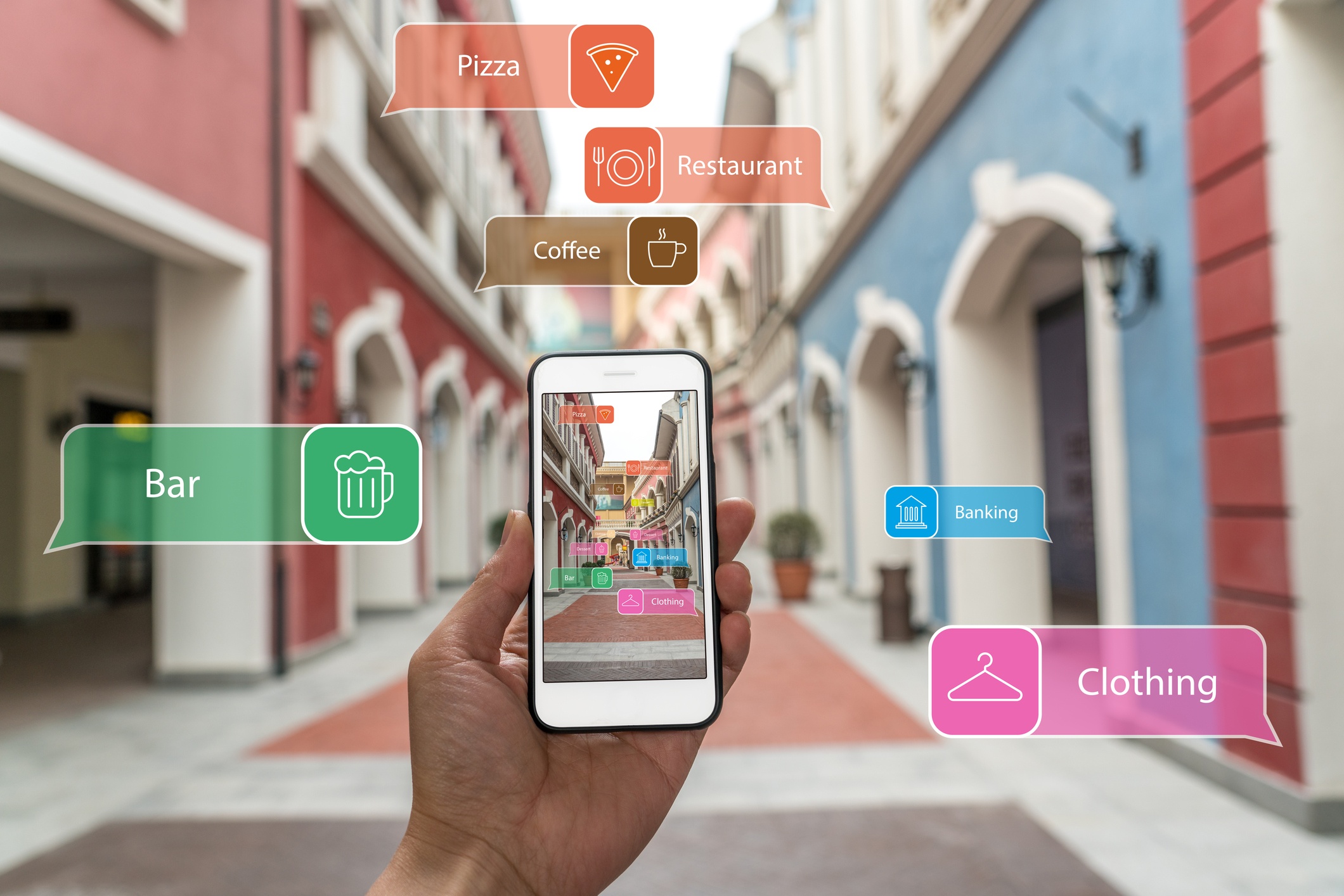Table of Contents
What is an augmented reality app and how to create it
Augmented and virtual reality was nothing more than a theory when the phrase was first coined in 1990. A Boeing researcher, Tom Caudell, first came up with the idea, back when Star Trek: The Next Generation introduced the Holodeck, a fictional immersive virtual reality environment.
Now we are closer than ever to immersive virtual realities. With augmented reality (AR), already having an impact on app development. One of the most impactful and well-known AR apps to hit the market was Pokemon Go in 2016.
Pokemon Go caught the world’s attention, quickly resulting in AR brand collaborations, such as Starbucks and T-Mobile. It is a mobile game developed and published by Niantic for iOS and Android devices, known for breaking world records for downloads and app revenues. Launched in 2016, Pokemon Go currently has 900 million downloads as of September 2018, and an estimated $1.2 billion in revenues, according to Apptopia.
However, Pokemon Go is far from the only noticeable player in the augmented reality market. Current estimates for the market value are estimating that it could be as high as $162 billion in 2024, according to experts interviewed by the BBC. AR device and service revenue currently stands at around $54 billion and is growing fast.
Augmented reality is big business. But what does this mean for companies developing apps?
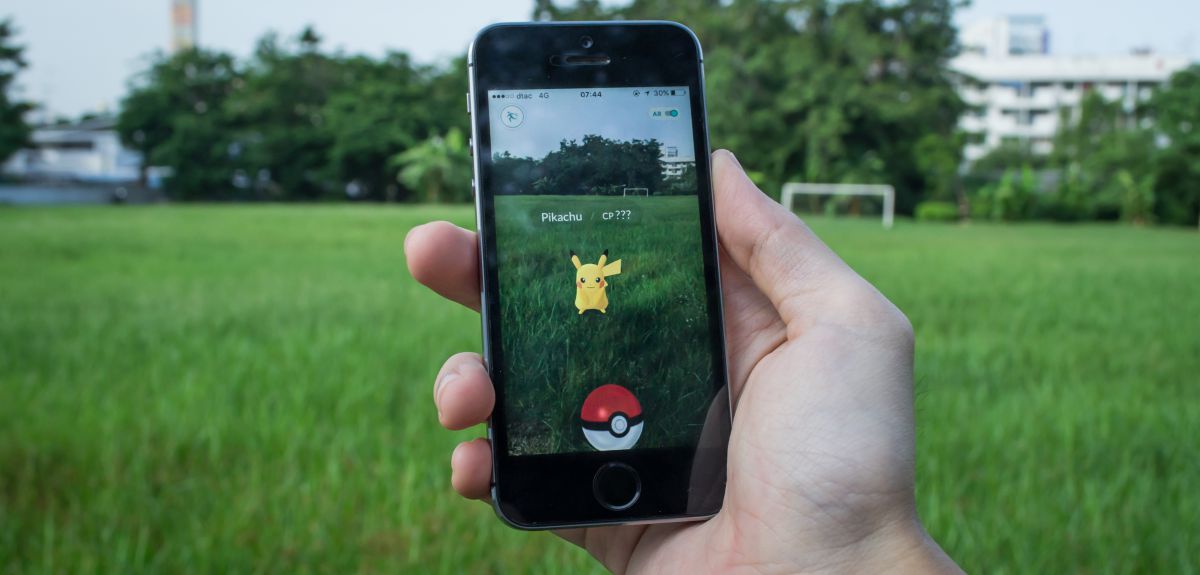
What do you need to know about developing an app with Augmented Reality (AR)?
AR is not virtual reality (VR). Unlike VR – which is immersive and usually requires a headset, such as an Oculus Rift – AR allows app developers and companies to overlay digital information on real-world objects. In museums and galleries across the world, you can rent a walking guide – usually on a device around the size of an old phone or Walkman, with headphones.
Imagine if instead, you download an app and point it at exhibits to get more information. With AR, that is the sort of immersive experience your company could provide customers when you’ve got a product or service that would benefit from a digital overlay of new and interesting information. AR is already influencing app development around the world, with companies in sectors as diverse as real estate, finance and healthcare asking for AR layers and augmentation to apps they’re developing.
Unlike VR, augmented reality is more accessible and doesn’t require customers to buy anything new. Anyone with a smartphone that has a camera can access AR technology. It helps – but isn’t essential – to have location-based services enabled. For companies considering AR within or alongside your mobile offerings, there are two versions you can provide.
Location-based AR
Location and marker-based are the two versions of AR that can be implemented within apps.
Location-based – as the name suggests – uses the geolocation data within phones to directly influence the AR experience within the app. For example, this typically means that wherever the user is, they are able to interact with the world physically and with an augmented digital overlay. This way, you could give customers an immersive tour of a city, a museum or gallery, or help someone find where they parked in a busy city.
Users would need to enable geolocation data sharing with the app to benefit from a location-based AR experience.
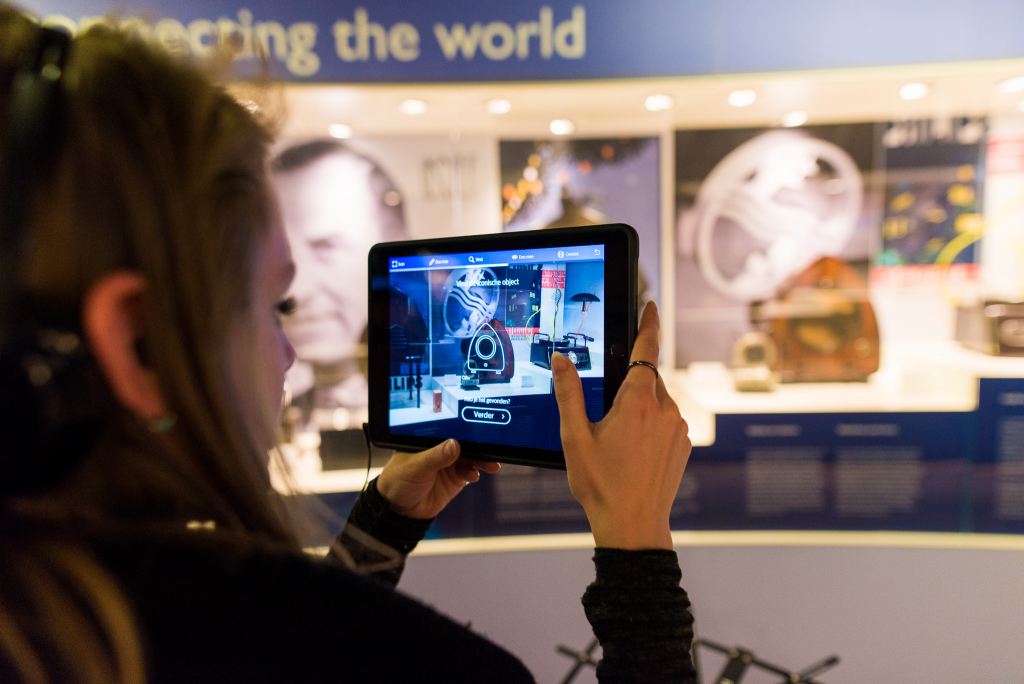
Marker-based AR
Marker-based is somewhat different.
Instead of relying on geographic inputs, marker-based apps rely on patterns and interaction with a smartphone camera. For example, when an app is opened, if someone were to point a smartphone’s camera at a QR code with a logo or brand symbol it would generate a digital overlay of information in the real world.
Marker-based overlays of information offer marketers an enormous amount of potential. Now it’s possible to combine digital marketing and point-of-sale with physical promotions and in-store/on-site activities. Combining these create a powerful and effective game-changer. This can even work if the object in question is animated.
Providing a UI overlay on a physical object, such as an item of clothing or meal in a restaurant, gives brands creative new ways to make an in-store experience more immersive, thereby improving the customer experience and increased revenues.
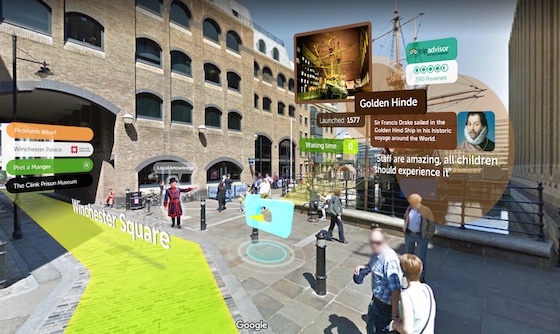
Sectors that would benefit from AR
AR won’t work for every sector, of course. Banks, for example, need mobile apps and money transfer apps, but do financial sector customers want an immersive experience? Probably not. One of the challenges around developing AR and VR products and services is ensuring the business case aligns with reality.
However, there are several sectors where an AR offering – or adapting an app that is already popular – makes a lot of sense. In any sector or business where customers would benefit from an improved experience or a more interactive delivery of information, AR is worth considering. It’s actively used in the retail industry, providing, for example,
1. Entertainment
Entertainment is one sector with the most to gain from AR and VR technology. Numerous brands can enhance what they’re offering with an AR experience or adapting an already popular game with augmented reality technology. Think of ways your game can benefit from combining the physical with the digital worlds. Games that involve quests and journeys would be ideal for an AR experience, which would also open the door to brand collaborations and extra revenue streams.
2. Retail
In the UK, EU, and the US, brick-and-mortar retailers are struggling. Too many big brands and retailers have closed in recent years for this to be a passing trend. One one level, as recent Black Friday and Cyber Monday figures will show, more people than ever are shopping online. On another level, retailers are struggling to adapt the in-store experience to modern consumer needs.
AR is one-way retailers can combine digital with physical experiences. Give your mobile-savvy customers an enhanced experience. Instead of them looking for deals on similar products, or even trying on an outfit then buying it online from a competitor (which happens more often these days), you can tell them more about a product, give them offers and create up-sell opportunities. Make your in-store retail experience more enjoyable without investing a fortune in physical displays. Not only is this giving customers what they want, but it also means that retailers can adapt more quickly with a much shorter lead time between creating and implementing an AR display compared to physical changes.
3. Education
Learning experiences for students of every age group can become more immersive. Students are already accessing learning tools and apps on smartphones and tablets, making an AR experience a small step along a road already traveled. Just imagine history, science and art classes with the benefit of AR?
In medical school, for example, a VR learning center in Pomona, California, can take medical students inside the human body at the microscopic level. Providing a more memorable and immersive experience than simply reading about cells and watching videos. Education can and will benefit enormously from AR, with education providers able to create content that students will embrace more readily than traditional learning methods.
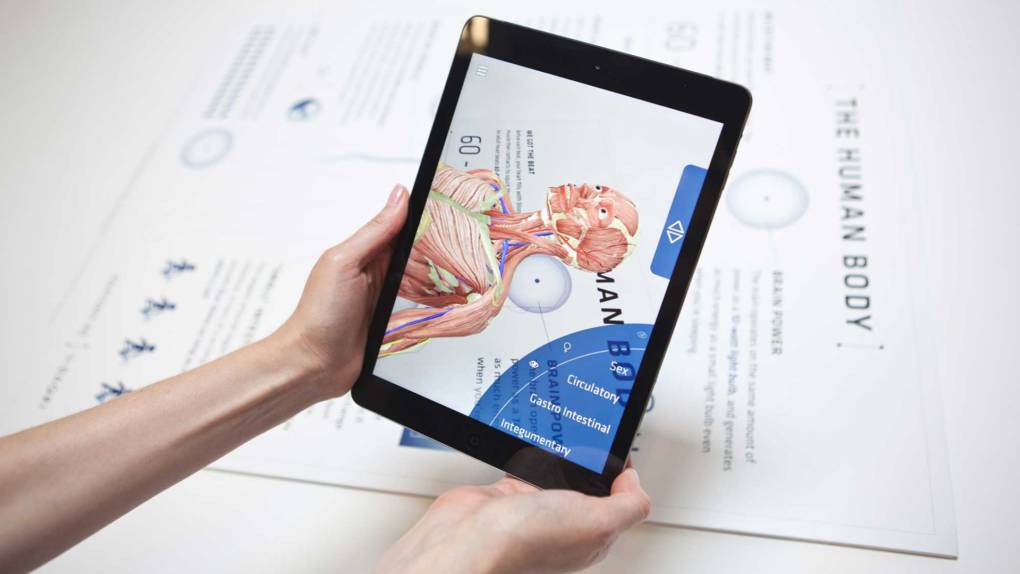
4. Tourism
Tourism providers can benefit from AR in several ways.
As part of the sales experience, you can show customers more easily the destinations on offer. Making it easier to sell a city, region, or resort. And then, when you get to your destination, AR apps can give holidaymakers more information and immersive experience that will contribute to the quality of the holiday.
Several apps already use AR as part of the tourist experience. Word Lens, for example, translates signs into English – and several other languages – when a smartphone camera is pointed at a sign. In the UK, England’s Historic Cities app walks tourists through the history of fascinating cities, giving them a historical guide. With apps such as these, AR can also provide the perfect gateway for brand tie-ins and advertising, creating hyper-local opportunities and offerings that wouldn’t be possible without a location or marker-based AR.
5. Real Estate
In a similar way, commercial and residential real estate sellers and letting agents can use AR to sell the benefits of the property. AR embeds on websites and in apps can give potential buyers/tenants a 3D experience of a property, the area, and city without leaving their own home or office. Several apps already walk customers through real estate, with several more property companies looking at this as a key part of sales and marketing campaigns in 2023.
These are simply a few ways that companies can embrace the use of augmented reality apps.
Augmented reality challenges include identifying a suitable business case and finding the right way to integrate AR with the services your company provides. If this is something you are looking at doing, then here are a few things you need to consider, including potential cost implications.
How to develop augmented reality (AR) apps
Augmented reality apps rely on several factors: knowing whether the AR integration is location or marker-based, and some form of image processing capability. In almost every case, an AR app is going to super-impose digital content on a real-world object, in real-time. Getting alignment between physical and digital content is one of the main challenges when developing an AR app.
A key part of that challenge is to ensure the UI/UX is closely tailored to the needs of the user, otherwise, there is a risk that the app won’t provide much value for those who download it. Keep your AR experience simple and intuitive. Complex and clunky will put people off using it.
Developing AR apps requires a variety of skills rarely found within mobile development teams. Although you will also need to work with mobile app developers, you are also going to need specialisms, including 3D modeling, computer vision, and imaging expertise. One or more specialist designers/developers are going to need to provide those skills while working alongside app developers to integrate the AR features with a new or current app that is being modified.
Most augmented reality app development projects take place in C# and C++, to keep it simple for other app developers working on the project. Thankfully, developers working on AR projects can turn to trusted platforms where they can create AR objects and use a whole bunch of great tools that reduce the development timescale. These platforms include ARPA SDK’s, DroidAR (for Android), Metaio SDK, Vuforia SDK, Wikitude SDK, and ARLab SDK. Almost all include support for iOS, Android, Google Glass, Windows, and Unity, making it easier to start building an AR app with the benefit of a community and dozens of useful tools.
Assuming AR is something that can add value to your customer interactions and revenue, let’s consider what it costs to create and implement AR within an app.
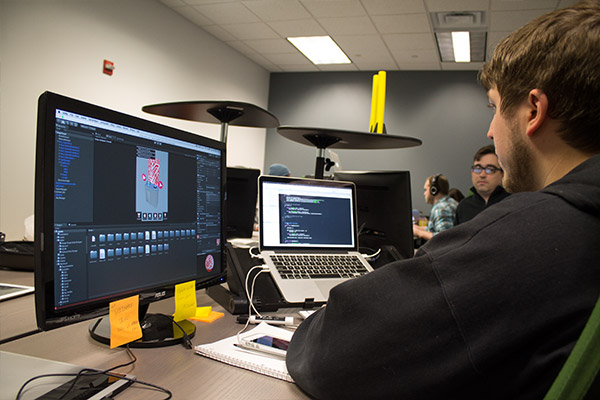
How much does AR development costs?
Although there are several options when it comes to implementing AR technology, here are three of the most popular choices and what it costs when working with a development team in Eastern Europe.
1. Basic ‘gyroscope’ implementation
Take an app that doesn’t have AR. Add a feature that uses a smartphone’s camera to place digital or 3D objects around a user, which is known as a gyroscope format. This is one of the easiest and quickest ways to integrate AR into an app.
Working on the assumption that a developer can do this in Ukraine, where hourly rates are around the U.S. $35.00, this work can take between 150 and 250 hours.
Estimated cost: $5250 – $8750
2. SLAM (Simultaneous Localization and Mapping)
Using multiple sensors on a device, or in a specific location can define an accurate location for an object. With an AR app, you can use SLAM to accurately position a 3D object in a new location, which is something Ikea and other furniture retailers are finding useful.
Work such as this can take between 250 and 500 hours, depending of course on the complexity of the products involved. Estimated cost: $8750 – $17,500
3. Location-based AR
One of the most popular formats also involves quite a bit of work and the use of several technologies. Creating a location-based AR app involves working with GPS, Wi-Fi, and compass, plus the 3D tools and digital content creation to create the information overlay. This can take between 400 and 800 hours. Estimated cost: $14,000 – $28,000
Key takeaways
Consumers are more willing than ever to embrace immersive AR technology. Businesses in numerous sectors can benefit from this growing trend. Creating experiences that integrate digital with physical experiences will take your customer experience to a whole new level and create exciting new revenue and promotional opportunities. However, you need a good team to work on AR project for your business. Make sure you hire experienced talent in case you have not built AR products before.

